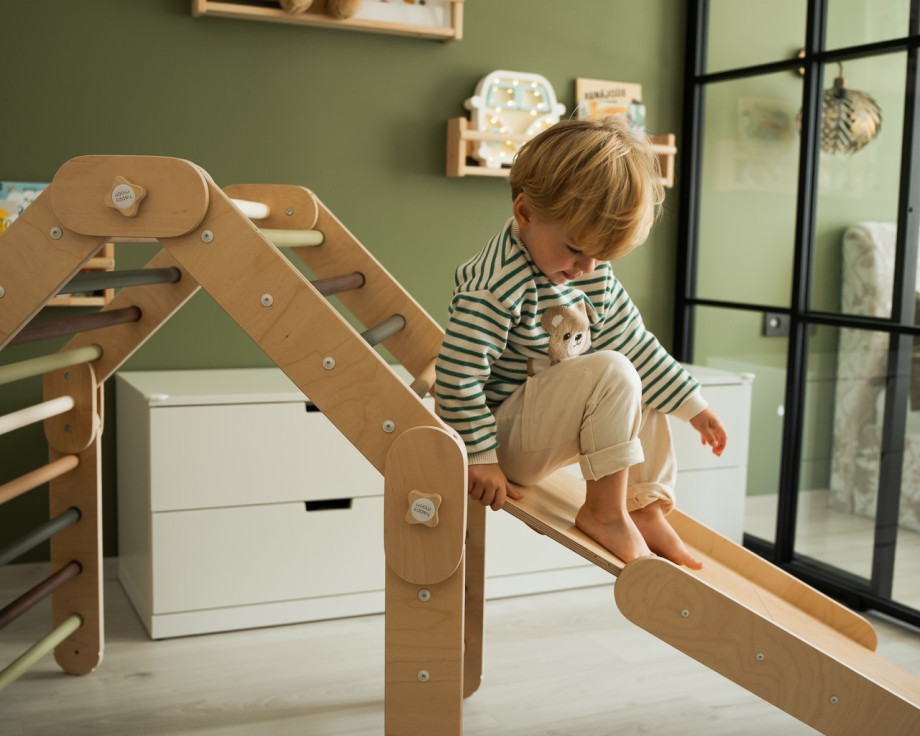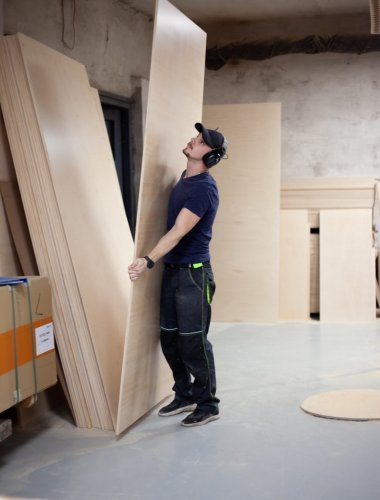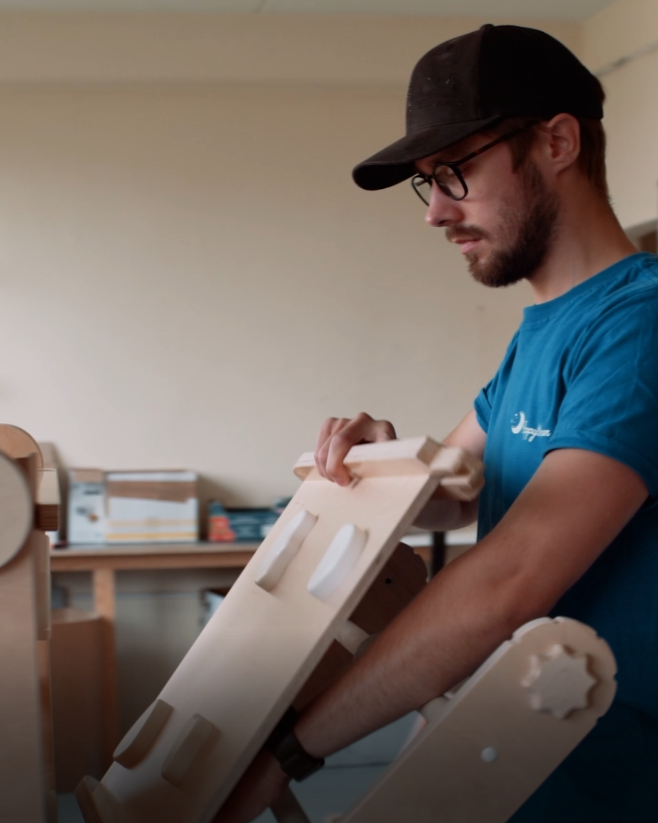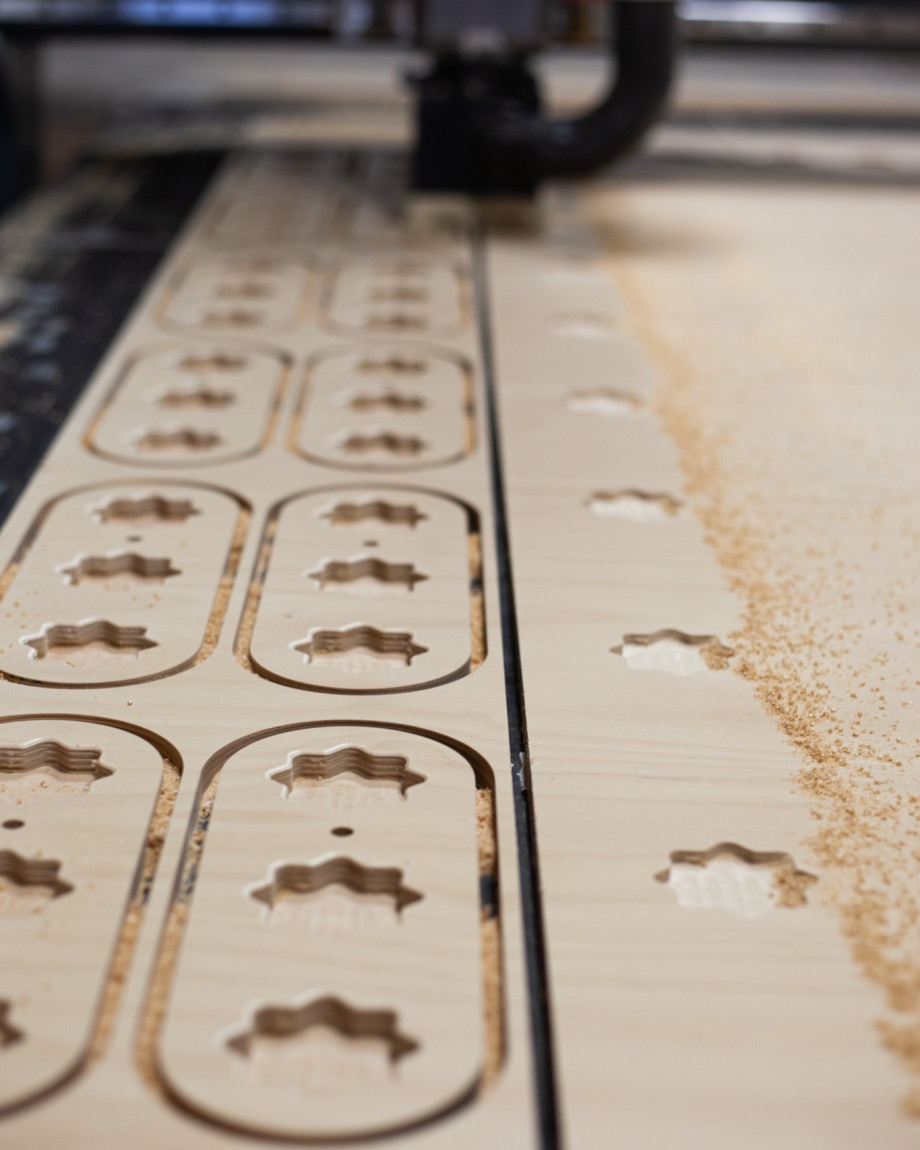In this post, we’ll explore what formaldehyde is, how it's used in plywood, and how you can ensure that the products you buy are safe for your family and the environment.

What is Formaldehyde?
Formaldehyde is a naturally occurring chemical found in the environment, including in wood. Even the trees around us, such as oak, emit small amounts of formaldehyde—about 0.009 parts per million (ppm). Formaldehyde is a colorless gas with a strong odor and is also produced by the human body in small amounts. The important takeaway here is that formaldehyde is present in many everyday materials, including vinyl, textiles, mirrors, and even products like toothpaste.
In industrial settings, formaldehyde is used for its adhesive properties. It plays a crucial role in bonding layers of wood veneers together to create plywood and other engineered wood products.

Formaldehyde in plywood: What You Need to Know
While formaldehyde is present in plywood, the key concern is its emission levels. The good news is that when plywood is manufactured with low-emission adhesives and complies with global safety standards, it is completely safe for everyday use in homes, schools, and even children’s toys. This makes it essential to understand what standards ensure plywood is safe and how you can make informed choices when purchasing wooden products.
Manufacturers are now focusing on producing plywood with formaldehyde emission levels well below harmful thresholds. These low-emission adhesives minimize the release of formaldehyde, ensuring that any exposure is well within safe limits.
Standards and Regulations
Governments worldwide have introduced regulations to limit formaldehyde emissions from wood products, including plywood. These regulations are in place to protect consumers, particularly in environments where formaldehyde exposure could be more concentrated, like homes and schools.
Although there is no single global standard, regional regulations in the EU, U.S., Japan, Australia, and China have established consistent low-emission limits that ensure plywood is safe for consumers.
EU and World Regulations
The EU sets some of the strictest regulations in the world. Under EU standards, plywood and other pressed-wood products must have formaldehyde emissions below 0.1 ppm (parts per million). This ensures that the products are categorized as “low emission” and safe for use. Every piece of wooden furniture or product sold in the EU must meet these standards.
In the U.S., plywood must meet the strict standard, with formaldehyde emissions of ≤ 0.05 ppm. Japan has an even stricter rating, limiting emissions to ≤ 0.3 mg/L. Australia follows the standard, with a limit of ≤ 1 ppm, like Europe. In China, plywood is classified as ≤ 0.5 mg/L. These standards ensure that plywood in these countries is low in formaldehyde, making it a safe for use at home.
HappyMoon’s Commitment to Safety
At HappyMoon, we are committed to using only the safest materials. We’ve established partnership with Latvijas Finieris, one of the largest birch plywood manufacturers in the world. The plywood we use in manufacturing process is one of the most ecological plywood’s, which can be ever found and meets EU formaldehyde emission standards.
When you purchase HappyMoon products, you can be confident that our wooden goods are free from harmful chemicals and are safe for your family and the environment.
Why Choose Low-Formaldehyde Plywood?
Choosing plywood with low formaldehyde emissions has several benefits:
- Health Safety: Products meeting global standards have minimal formaldehyde emissions, reducing any potential health risks for your family.
- Sustainability: Low-emission plywood helps to minimize indoor air pollution, creating a healthier living space.
- Long-Term Use: High-quality plywood is durable, ensuring that your wooden items last longer, reducing the need for frequent replacements and supporting sustainability.
Tips for Buyers
If you’re looking to purchase wooden products made from plywood, here’s what you should look for:
- Check Certifications: Always look for plywood products that meet formaldehyde emission standards, such as EU certification.
- Ask Questions: Don’t hesitate to ask the manufacturer about the formaldehyde levels in their plywood and whether their products meet international standards.
- Choose Reputable Brands: Stick to brands that are transparent about their materials, which prioritizes safety and sustainability.
- Proper Maintenance: If your plywood product is used indoors, avoid exposure to excessive moisture to prevent damage over time.
 Safe, Sustainable Choices
Safe, Sustainable Choices
While formaldehyde is naturally occurring in wood, plywood products that meet global standards are safe for everyday use. At HappyMoon, we’re proud to offer eco-friendly, low-emission plywood products that adhere to the strictest safety standards, ensuring the well-being of your family and the planet.
By making smart, informed decisions, you can confidently choose plywood products that are safe, sustainable, and long-lasting.














